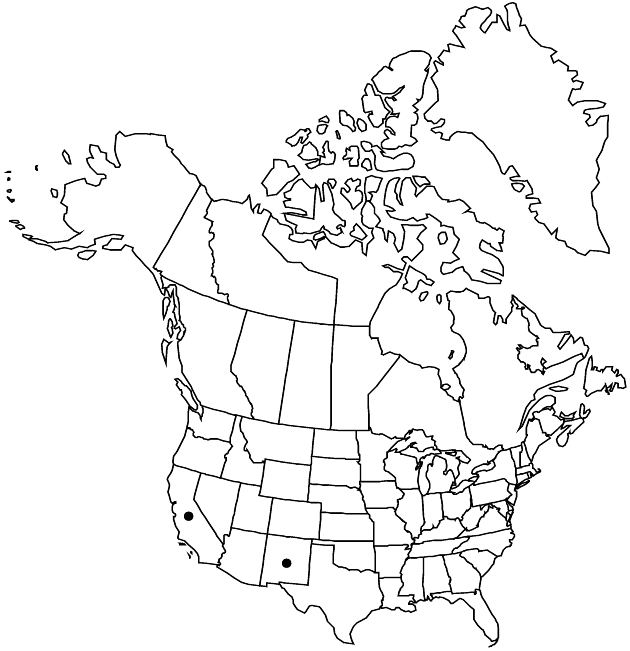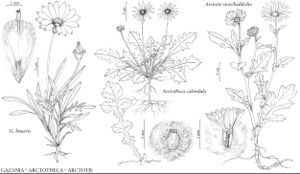Difference between revisions of "Gazania linearis"
Rep. Bot. Soc. Exch. Club Brit. Isles 4: 624. 1917.
FNA>Volume Importer |
FNA>Volume Importer |
||
| Line 53: | Line 53: | ||
|publication year=1917 | |publication year=1917 | ||
|special status= | |special status= | ||
| − | |source xml=https://jpend@bitbucket.org/aafc-mbb/fna-data-curation.git/src/ | + | |source xml=https://jpend@bitbucket.org/aafc-mbb/fna-data-curation.git/src/8f726806613d60c220dc4493de13607dd3150896/coarse_grained_fna_xml/V19-20-21/V19_230.xml |
|tribe=Asteraceae tribe Arctotideae | |tribe=Asteraceae tribe Arctotideae | ||
|genus=Gazania | |genus=Gazania | ||
Revision as of 15:10, 18 September 2019
Stems sometimes proximally woody. Leaves mostly basal; blades either linear to lanceolate and not lobed, 10–20(–38) cm × 6–10 mm, or oblanceolate to oblong and pinnately lobed, 10–20 cm × 25–50 mm, or both; bases usually attenuate, margins usually entire, sometimes ± prickly, revolute, midveins prominent, abaxial faces white-villous, adaxial faces glabrate to arachnose. Heads 3.5–8 cm diam. (across rays). Peduncles scapiform, (6–)10–30(–35) cm. Phyllaries: outer lanceolate, margins prickly-ciliate; the inner with margins undulate, ciliate, with ± submarginal dark stripe, cuspidate. Ray florets 13–18; corolla laminae yellow or orange, usually each with dark abaxial stripe and adaxial basal blotch or spot, (20–)35–42 × 10 mm. Cypselae 1–2 mm; pappi of 7–8 scales 3–4 mm.
Phenology: Flowering Oct–Jul.
Habitat: Roadsides, waste places, especially in urban coastal areas
Elevation: 0–400(–900) m
Distribution

Calif., N.Mex., Africa.
Discussion
Selected References
None.
